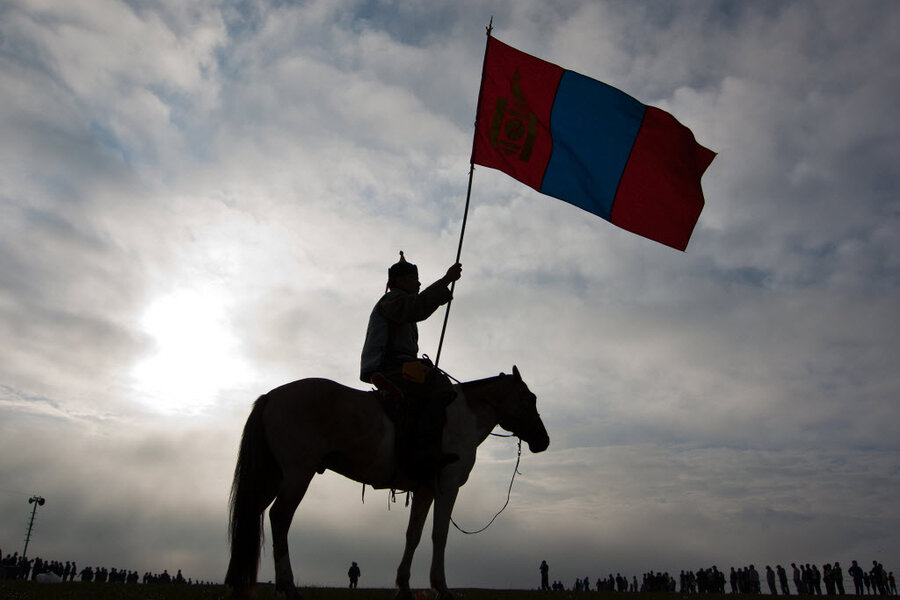Decoding tree rings: How the climate may have helped Genghis Khan
Loading...
A remarkable tree-ring record of Mongolia's climate over the past 1,112 years has revealed warm, wet conditions that could have helped Genghis Khan build the largest empire in human history.
Some historians have suggested that drought drove the Mongol leader and his army to conquer an expanse that reached from the coast of northern China to the Caspian Sea by the time of his death in 1227. His son, Ogodei, would extend the empire's boundaries still farther to include eastern Europe, the rest of China, northern India, and much of western Asia.
Instead of drought, the climate record shows that in Mongolia, summer conditions were warm and unusually wet.
The persistently wet period, which lasted from 1211 to 1225, corresponds to the time of the empire's greatest expansion under the elder Khan. A research team posits that abundant moisture could have led to plenty of steppe grass to nourish the horses of Khan's cavalry and the livestock that fed his troops.
So far, the researchers have sampled trees at one site about 150 miles northwest of the site of Genghis Khan's capital, Karakorum, and the samples suggest that fodder was abundant at the jumping-off point for Khan's armies. The team, led by Neil Pederson at Columbia University's Lamont-Doherty Earth Observatory and West Virginia University geographer Amy Hessl, is beginning to hunt for evidence of climate conditions in the conquered areas as well.
Preliminary evidence based on other climate reconstructions hint that Beijing during this period was experiencing drought, as was today's eastern Kazakhstan, Dr. Pederson says, adding that parts of the conquered lands appear to have been wetter than usual.
"It's really a complex story," he says, one that suggests that climate conditions may have been weakening some of the soon-to-be conquered groups even as conditions were contributing to the strength of Mongol forces.
Researchers have been using tree rings to build a long-term climate record of the Eurasian continent for more than a decade. For his part, Pederson says he has been working in Mongolia since the late 1990s.
The Mongolian rainfall reconstruction grew out of a project to study the history of climate change and forest-fire history in the region that Pederson developed with Dr. Hessl and tree-ring specialist Peter Brown, who heads Rocky Mountain Tree Ring, a nonprofit lab in Fort Collins, Colo., during a 2006 meeting in Mongolia.
Pederson and Hessl were driving past a large lava field that sported stands of stunted pines "that looked gorgeous, and old, and different," Pederson recalls. The trees, slow growers, were eking out a living on the Khorgo lava bed. Hessl insisted that the samples from the trees would be useful for the new project, so the duo stopped to quickly collect a few samples at the end of an exhausting day.
A follow-up trip in 2011 yielded samples from trees that turned out to be at least twice as old as Pederson expected. In counting the rings from a couple of trees, the rings included the years when Genghis Khan was born.








